- All Bible Maps
- Heart Messages
- Roman Roads
- Archaeology

Map of the Route of the Exodus of the Israelites from Egypt
( Enlarge ) ( PDF for Print ) (Freely Distributed)
Map of the Route of the Hebrews from Egypt
This map shows the Exodus of the Israelites from Egypt to the Promised Land under the leadership of Moses.
The Nile Delta was a triangular area of marshland about 150 miles from north to south, from Memphis to the Mediterranean, and about 150 - 200 miles wide.
Upper Egypt was a bit further south from Lower Egypt, starting at Memphis (bottom of the Nile Delta Triangle) and extended for about 600 miles down the Nile River Valley to Elephantine (Aswan).
Genesis 47:6 - The land of Egypt [is] before thee; in the best of the land make thy father and brethren to dwell; in the land of Goshen let them dwell: and if thou knowest [any] men of activity among them, then make them rulers over my cattle.
Hosea 9:6 - For, lo, they are gone because of destruction: Egypt shall gather them up, Memphis shall bury them: the pleasant [places] for their silver, nettles shall possess them: thorns [shall be] in their tabernacles.
Exodus 14:1-2 - And the LORD spake unto Moses, saying, Speak unto the children of Israel, that they turn and encamp before Pihahiroth, between Migdol and the sea, over against Baalzephon: before it shall ye encamp by the sea.
Exodus 14:21-22 - And Moses stretched out his hand over the sea; and the LORD caused the sea to go back by a strong east wind all that night, and made the sea dry land, and the waters were divided. And the children of Israel went into the midst of the sea upon the dry ground: and the waters were a wall unto them on their right hand, and on their left.
Egypt in the Bible Encyclopedia - ISBE Egypt 1. The Basis of the Land: Though Egypt is one of the earliest countries in recorded history, and as regards its continuous civilization, yet it is a late country in its geological history and in its occupation by a settled population. The whole land up to Silsileh is a thick mass of Eocene limestone, with later marls over that in the lower districts. It has been elevated on the East, up to the mountains of igneous rocks many thousand feet high toward the Red Sea. It has been depressed on the West, down to the Fayum and the oases below sea-level. This strain resulted in a deep fault from North to South for some hundreds of miles up from the Mediterranean. This fault left its eastern side about 200 ft. above its western, and into it the drainage of the plateau poured, widening it out so as to form the Nile valley, as the permanent drain of Northeast Africa. The access of water to the rift seems to have caused the basalt outflows, which are seen as black columnar basalt South of the Fayum, and brown massive basalt at Khankah, North of Cairo. 2. The Nile Valley: The gouging out of the Nile valley by rainfall must have continued when the land was 300 ft. higher than at present, as is shown by the immense fails of strata into collapsed caverns which were far below the present Nile level. Then, after the excavations of the valley, it has been submerged to 500 ft. lower than at present, as is shown by the rolled gravel beds and deposits on the tops of the water-worn cliffs, and the filling up of the tributary valleys--as at Thebes--by deep deposits, through which the subsequent stream beds have been scoured out. The land still had the Nile source 30 ft. higher than it is now within the human period, as seen by the worked flints in high gravel beds above the Nile plain. The distribution of land and water was very different from that at present when the land was only 100 ft. lower than now. Such a change would make the valley an estuary up to South of the Fayum, would submerge much of the western desert, and would unite the Gulf of Suez and the Mediterranean. Such differences would entirely alter the conditions of animal life by sea and land. And as the human period began when the water was considerably higher, the conditions of climate and of life must have greatly changed in the earlier ages of man's occupation. Full Article
Egypt in Smith's Bible Dictionary
Egypt (land of the Copts), a country occupying the northeast angle of Africa. Its limits appear always to have been very nearly the same. It is bounded on the north by the Mediterranean Sea, on the east by Palestine, Arabia and the Red Sea, on the south by Nubia, and on the west by the Great Desert. It is divided into upper Egypt --the valley of the Nile --and lower Egypt, the plain of the Delta, from the Greek letter; it is formed by the branching mouths of the Nile, and the Mediterranean Sea. The portions made fertile by the Nile comprise about 9582 square geographical miles, of which only about 5600 is under cultivation. --Encyc. Brit. The Delta extends about 200 miles along the Mediterranean, and Egypt is 520 miles long from north to south from the sea to the First Cataract. NAMES. --The common name of Egypt in the Bible is "Mizraim." It is in the dual number, which indicates the two natural divisions of the country into an upper and a lower region. The Arabic name of Egypt --Mizr-- signifies "red mud." Egypt is also called in the Bible "the land of Ham," Ps 105:23,27 comp. Psal 78:51 --a name most probably referring to Ham the son of Noah --and "Rahab," the proud or insolent: these appear to be poetical appellations. The common ancient Egyptian name of the country is written in hieroglyphics Kem, which was perhaps pronounced Chem. This name signifies, in the ancient language and in Coptic, "black," on account of the blackness of its alluvial soil. We may reasonably conjecture that Kem is the Egyptian equivalent of Ham. GENERAL APPEARANCE, CLIMATE, ETC. --The general appearance of the country cannot have greatly changed since the days of Moses. The whole country is remarkable for its extreme fertility, which especially strikes the beholder when the rich green of the fields is contrasted with the utterly bare, yellow mountains or the sand-strewn rocky desert on either side. The climate is equable and healthy. Rain is not very unfrequent on the northern coast, but inland is very rare. Cultivation nowhere depends upon it. The inundation of the Nile fertilizes and sustains the country, and makes the river its chief blessing. The Nile was on this account anciently worshipped. The rise begins in Egypt about the summer solstice, and the inundation commences about two months later. The greatest height is attained about or somewhat after the autumnal equinox. The inundation lasts about three months. The atmosphere, except on the seacoast, is remarkably dry and clear, which accounts for the so perfect preservation of the monuments, with their pictures and inscriptions. The heat is extreme during a large part of the year. The winters are mild, --from 50 Full Article
The Exodus in Smith's Bible Dictionary
Exodus, The of the Israelites from Egypt. the common chronology places the date of this event at B.C. 1491, deriving it in this way: --In 1Ki 6:1 it is stated that the building of the temple, in the forth year of Solomon, was in the 480th year after the exodus. The fourth year of Solomon was bout B.C. 1012. Add the 480 years (leaving off one years because neither the fourth nor the 480th was a full year), and we have B.C. 1491 as the date of the exodus. This is probably very nearly correct; but many Egyptologists place it at 215 years later, --about B.C. 1300. Which date is right depends chiefly on the interpretation of the Scripture period of 430 years, as denoting the duration of the bondage of the Israelites. The period of bondage given in Ge 15:13,14; Ex 12:40,41 and Gala 3:17 as 430 years has been interpreted to cover different periods. The common chronology makes it extend from the call of Abraham to the exodus, one-half of it, or 215 years, being spend in Egypt. Others make it to cover only the period of bondage spend in Egypt. St. Paul says in Ga 3:17 that from the covenant with (or call of) Abraham the giving of the law (less than a year after the exodus) was 430 years. But in Ge 15:13,14 it is said that they should be strangers in a strange land,a nd be afflicted 400 years, and nearly the same is said in Ex 12:40 But, in very truth, the children of Israel were strangers in a strange land from the time that Abraham left his home for the promised land, and during that whole period of 430 years to the exodus they were nowhere rulers in the land. So in Ex 12:40 it is said that the sojourning of the children of Israel who dwelt in Egypt was 430 years. But it does not say that the sojourning was all in Egypt, but this people who lived in Egypt had been sojourners for 430 years. (a) This is the simplest way of making the various statements harmonize. (b) The chief difficulty is the great increase of the children of Israel from 70 to 2,000,000 in so short a period as 215 years, while it is very easy in 430 years. But under the circumstances it is perfectly possible in the shorter period. See on ver. 7 (c) If we make the 430 years to include only the bondage in Egypt, we must place the whole chronology of Abraham and the immigration of Jacob into Egypt some 200 years earlier, or else the exodus 200 years later, or B.C. 1300. in either case special difficulty is brought into the reckoning. (d) Therefore, on the whole, it is well to retain the common chronology, though the later dates may yet prove to be correct. The history of the exodus itself commences with the close of that of the ten plagues. [PLAGUES, THE TEN] In the night in which, at midnight, the firstborn were slain, Ex 12:29 Pharaoh urged the departure of the Israelites. vs. Ex 12:31,32 They at once set forth from Rameses, vs. Ex 12:37,39 apparently during the night v. Ex 12:42 but towards morning on the 15th day of the first month. Nu 33:3 They made three journeys, and encamped by the Red Sea. Here Pharaoh overtook them, and the great miracle occurred by which they were saved, while the pursuer and his army were destroyed. [RED SEA, PASSAGE OF] Full Article
The Red Sea in Smith's Bible Dictionary
The Passage of the Red Sea It is necessary to endeavor to ascertain the route of the Israelites before we can attempt to discover where they crossed the sea. The point from which they started was Rameses, a place certain in the land of Goshen, which we identified with the Wadi-t-Tumeylat. They encamped at Succoth. At the end of the second day's journey the camping place was at Etham, "in the edge of the wilderness." Ex 13:20; Nu 33:6 Here the Wadi-t-Tumeylat was probably left, as it is cultivable and terminates in the desert. At the end of the third day's march for each camping place seems to mark the close of a day's journey the Israelites encamped by the sea, place of this last encampment and that of the passage would be not very far from the Persepolitan monument at Pihahiroth. It appears that Migdol was behind Pi-hahiroth and on the other hand Baalzephon and the sea. From Pi-hahiroth the Israelites crossed the sea. This was not far from halfway between the Bitter Lakes and the Gulf of Suez, where now it is dry land. The Muslims suppose Memphis to have been the city at which the Pharaoh of the exodus resided before that event occurred. From opposite Memphis a broad valley leads to the Red Sea. It is in part called the Wadi-t-Teeh, or "Valley of the Wandering." From it the traveller reaches the sea beneath the lofty Gebel-et-Takah, which rises in the north and shuts off all escape in that direction excepting by a narrow way along the seashore, which Pharaoh might have occupied. The sea here is broad and deep, as the narrative is generally held to imply. All the local features seem suited for a great event. The only points bearing on geography in the account of this event are that the sea was divided by an east wind. Whence we may reasonably infer that it was crossed from west to east, and that the whole Egyptian army perished, which shows that it must have been some miles broad. Full Article
The Bible Mentions "Egypt" Many Times
Exodus 34:18 - The feast of unleavened bread shalt thou keep. Seven days thou shalt eat unleavened bread, as I commanded thee, in the time of the month Abib: for in the month Abib thou camest out from Egypt . Genesis 46:7 - His sons, and his sons' sons with him, his daughters, and his sons' daughters, and all his seed brought he with him into Egypt . Jeremiah 2:18 - And now what hast thou to do in the way of Egypt , to drink the waters of Sihor? or what hast thou to do in the way of Assyria, to drink the waters of the river? Jeremiah 44:14 - So that none of the remnant of Judah, which are gone into the land of Egypt to sojourn there, shall escape or remain, that they should return into the land of Judah, to the which they have a desire to return to dwell there: for none shall return but such as shall escape. Isaiah 19:22 - And the LORD shall smite Egypt : he shall smite and heal [it]: and they shall return [even] to the LORD, and he shall be intreated of them, and shall heal them. 2 Kings 17:4 - And the king of Assyria found conspiracy in Hoshea: for he had sent messengers to So king of Egypt , and brought no present to the king of Assyria, as [he had done] year by year: therefore the king of Assyria shut him up, and bound him in prison. Exodus 23:15 - Thou shalt keep the feast of unleavened bread: (thou shalt eat unleavened bread seven days, as I commanded thee, in the time appointed of the month Abib; for in it thou camest out from Egypt : and none shall appear before me empty:) Exodus 10:13 - And Moses stretched forth his rod over the land of Egypt , and the LORD brought an east wind upon the land all that day, and all [that] night; [and] when it was morning, the east wind brought the locusts. Exodus 9:25 - And the hail smote throughout all the land of Egypt all that [was] in the field, both man and beast; and the hail smote every herb of the field, and brake every tree of the field. Jeremiah 44:30 - Thus saith the LORD; Behold, I will give Pharaohhophra king of Egypt into the hand of his enemies, and into the hand of them that seek his life; as I gave Zedekiah king of Judah into the hand of Nebuchadrezzar king of Babylon, his enemy, and that sought his life. Ezekiel 20:5 - And say unto them, Thus saith the Lord GOD; In the day when I chose Israel, and lifted up mine hand unto the seed of the house of Jacob, and made myself known unto them in the land of Egypt , when I lifted up mine hand unto them, saying, I [am] the LORD your God; Numbers 11:18 - And say thou unto the people, Sanctify yourselves against to morrow, and ye shall eat flesh: for ye have wept in the ears of the LORD, saying, Who shall give us flesh to eat? for [it was] well with us in Egypt : therefore the LORD will give you flesh, and ye shall eat. 1 Kings 8:16 - Since the day that I brought forth my people Israel out of Egypt , I chose no city out of all the tribes of Israel to build an house, that my name might be therein; but I chose David to be over my people Israel. Joshua 5:6 - For the children of Israel walked forty years in the wilderness, till all the people [that were] men of war, which came out of Egypt , were consumed, because they obeyed not the voice of the LORD: unto whom the LORD sware that he would not shew them the land, which the LORD sware unto their fathers that he would give us, a land that floweth with milk and honey. Jeremiah 43:11 - And when he cometh, he shall smite the land of Egypt , [and deliver] such [as are] for death to death; and such [as are] for captivity to captivity; and such [as are] for the sword to the sword. Genesis 47:6 - The land of Egypt [is] before thee; in the best of the land make thy father and brethren to dwell; in the land of Goshen let them dwell: and if thou knowest [any] men of activity among them, then make them rulers over my cattle. Ezekiel 29:12 - And I will make the land of Egypt desolate in the midst of the countries [that are] desolate, and her cities among the cities [that are] laid waste shall be desolate forty years: and I will scatter the Egypt ians among the nations, and will disperse them through the countries. Exodus 12:42 - It [is] a night to be much observed unto the LORD for bringing them out from the land of Egypt : this [is] that night of the LORD to be observed of all the children of Israel in their generations. Deuteronomy 16:1 - Observe the month of Abib, and keep the passover unto the LORD thy God: for in the month of Abib the LORD thy God brought thee forth out of Egypt by night. Deuteronomy 17:16 - But he shall not multiply horses to himself, nor cause the people to return to Egypt , to the end that he should multiply horses: forasmuch as the LORD hath said unto you, Ye shall henceforth return no more that way. Joshua 24:4 - And I gave unto Isaac Jacob and Esau: and I gave unto Esau mount Seir, to possess it; but Jacob and his children went down into Egypt . Judges 6:8 - That the LORD sent a prophet unto the children of Israel, which said unto them, Thus saith the LORD God of Israel, I brought you up from Egypt , and brought you forth out of the house of bondage; Genesis 41:36 - And that food shall be for store to the land against the seven years of famine, which shall be in the land of Egypt ; that the land perish not through the famine. Deuteronomy 13:5 - And that prophet, or that dreamer of dreams, shall be put to death; because he hath spoken to turn [you] away from the LORD your God, which brought you out of the land of Egypt , and redeemed you out of the house of bondage, to thrust thee out of the way which the LORD thy God commanded thee to walk in. So shalt thou put the evil away from the midst of thee. Joshua 24:32 - And the bones of Joseph, which the children of Israel brought up out of Egypt , buried they in Shechem, in a parcel of ground which Jacob bought of the sons of Hamor the father of Shechem for an hundred pieces of silver: and it became the inheritance of the children of Joseph. Joshua 5:5 - Now all the people that came out were circumcised: but all the people [that were] born in the wilderness by the way as they came forth out of Egypt , [them] they had not circumcised. Genesis 45:23 - And to his father he sent after this [manner]; ten asses laden with the good things of Egypt , and ten she asses laden with corn and bread and meat for his father by the way. Exodus 8:17 - And they did so; for Aaron stretched out his hand with his rod, and smote the dust of the earth, and it became lice in man, and in beast; all the dust of the land became lice throughout all the land of Egypt . Ezekiel 30:6 - Thus saith the LORD; They also that uphold Egypt shall fall; and the pride of her power shall come down: from the tower of Syene shall they fall in it by the sword, saith the Lord GOD. 2 Chronicles 6:5 - Since the day that I brought forth my people out of the land of Egypt I chose no city among all the tribes of Israel to build an house in, that my name might be there; neither chose I any man to be a ruler over my people Israel:

Explore the Bible Like Never Before!
Unearth the rich tapestry of biblical history with our extensive collection of over 1000 meticulously curated Bible Maps and Images . Enhance your understanding of scripture and embark on a journey through the lands and events of the Bible.
- Ancient city layouts
- Historic routes of biblical figures
- Architectural wonders of the Holy Land
- Key moments in biblical history
Start Your Journey Today!
Click here to access our Bible Maps and Images
Table of Contents
About bible geography, about bible maps, ancient empire maps, bible map collections, bible map series, biblical map projects, geographical maps, interactive bible maps, intertestamental color maps, new testament color maps, new testament maps, old testament color maps, old testament maps.
The Israelites’ Wandering: A Map of Their 40-Year Journey in the Wilderness
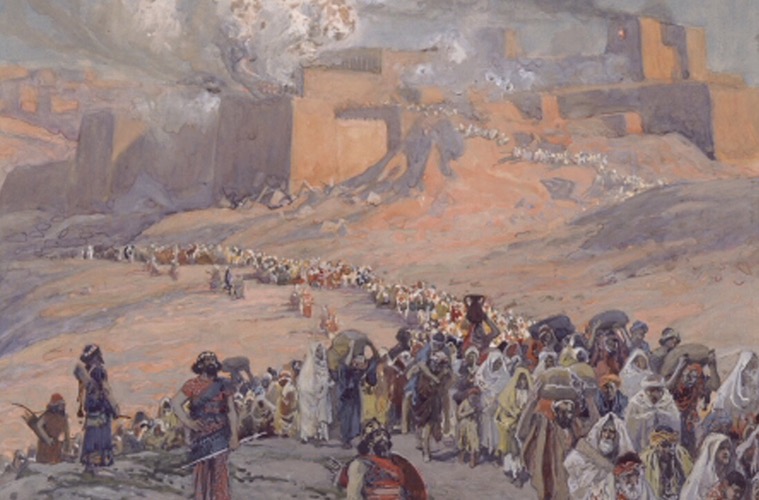
The story of the Israelites' wandering in the wilderness is one of the most well-known and powerful stories in the Bible. According to the Book of Exodus, after being led out of Egypt by Moses, the Israelites spent 40 years wandering in the wilderness before finally reaching the Promised Land. But have you ever wondered exactly where they traveled during this time? By using maps, we can trace their journey through the wilderness and gain a deeper understanding of this powerful story.
The journey of the Israelites began at the Red Sea, where they crossed on dry ground after God parted the waters. From there, they traveled south to the area of Marah, where they found bitter water that was made sweet by a miracle from God. They then continued eastward to the desert of Sin, where they were provided with manna from heaven and quail to eat.
The Israelites then traveled to Mount Sinai, where they received the Ten Commandments and other laws from God. After spending several months at Sinai, they continued their journey northward towards the Promised Land, but their progress was slowed by their disobedience and lack of faith in God.
The Israelites continued to wander in the wilderness for another 38 years, traveling back and forth across the desert and encountering many challenges and trials along the way. They fought battles against other nations, complained about their lack of food and water, and even rebelled against Moses and God on several occasions.
Finally, after 40 years of wandering, the Israelites reached the Promised Land, which was located on the eastern shores of the Jordan River. By using maps, we can see the locations of the places where they camped, the routes they took, and the challenges they faced during their journey.
In conclusion, a map of the Israelites' 40-year journey in the wilderness can help us to better understand this powerful story and the faith and perseverance of the Israelites. By tracing their journey, we can see the locations of the places where they camped and the routes they took, and gain a deeper appreciation for their struggles and ultimate triumph. So why not take a journey through the wilderness with the Israelites and discover the power of their story?
Related Posts
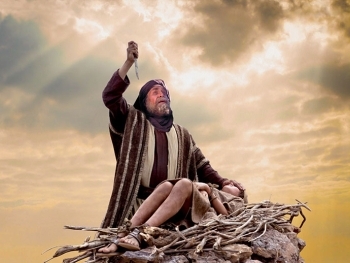
Abraham’s Obedience: Lessons in Trusting God
Abraham, often referred to as the "father of faith," is a key figure in the biblical narrative renowned for his... Read More

Understanding Moses’ Relationship with God Through Prayer
Moses, a central figure in the biblical narrative, is known for his close and intimate relationship with God. This connection... Read More
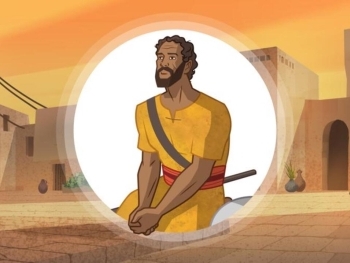
Crossing the Jordan: Joshua’s First Miraculous Act
The crossing of the Jordan River under the leadership of Joshua is a pivotal and miraculous event recounted in the... Read More
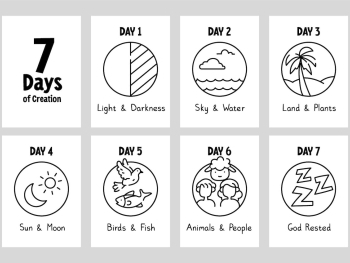
Theological Reflections: God’s Creative Process in Genesis
The opening chapters of the Book of Genesis provide a foundational narrative for understanding the Judeo-Christian concept of creation. The... Read More
2. Israel’s Exodus from Egypt and Entry into Canaan
Possible route of the Exodus
Jordan River
Salt Sea (Dead Sea)
Great Sea (Mediterranean Sea)
Philistines
River of Egypt
Wilderness of Zin
Rameses (Tanis)
Wilderness of Shur
Kadesh-barnea
Wilderness of Paran
Arabah (Rift Valley)
Eastern Wilderness
On (Heliopolis)
Pi-hahiroth?
Wilderness of Etham
Sinai Peninsula
Ezion-geber
Noph (Memphis)
Gulf of Suez
Wilderness of Sin
Sinai Wilderness
Wilderness Camps
Gulf of Aqaba
Mt. Sinai? (Horeb)
0 40 80 120
Rameses Israel was thrust out of Egypt ( Ex. 12 ; Num. 33:5 ).
Succoth After the Hebrews left this first campsite, the Lord attended them in a cloud by day and in a pillar of fire by night ( Ex. 13:20–22 ).
Pi-hahiroth Israel passed through the Red Sea ( Ex. 14 ; Num. 33:8 ).
Marah The Lord healed the waters of Marah ( Ex. 15:23–26 ).
Elim Israel camped by 12 springs ( Ex. 15:27 ).
Wilderness of Sin The Lord sent manna and quail to feed Israel ( Ex. 16 ).
Rephidim Israel fought with Amalek ( Ex. 17:8–16 ).
Mount Sinai (Mount Horeb or Jebel Musa) The Lord revealed the Ten Commandments ( Ex. 19–20 ).
Sinai Wilderness Israel constructed the tabernacle ( Ex. 25–30 ).
Wilderness Camps Seventy elders were called to help Moses govern the people ( Num. 11:16–17 ).
Ezion-geber Israel passed through the lands of Esau and Ammon in peace ( Deut. 2 ).
Kadesh-barnea Moses sent spies into the promised land; Israel rebelled and failed to enter the land; Kadesh served as the main camp of Israel for many years ( Num. 13:1–3, 17–33 ; 14 ; 32:8 ; Deut. 2:14 ).
Eastern Wilderness Israel avoided conflict with Edom and Moab ( Num. 20:14–21 ; 22–24 ).
Arnon River Israel destroyed the Amorites who fought against them ( Deut. 2:24–37 ).
Mount Nebo Moses viewed the promised land ( Deut. 34:1–4 ). Moses delivered his last three sermons ( Deut. 1–32 ).
Plains of Moab The Lord told Israel to divide the land and dispossess the inhabitants ( Num. 33:50–56 ).
Jordan River Israel crossed the Jordan River on dry ground. Near Gilgal, stones from the bottom of the Jordan River were placed as a monument of Jordan’s waters being divided ( Josh. 3:1–5:1 ).
Jericho The children of Israel captured and destroyed the city ( Josh. 6 ).
- Travel/Study
BIBLE HISTORY DAILY
Wilderness wanderings: where is kadesh.
Kadesh in the Bible and on the ground
“I was forty years old when Moses the servant of the Lord sent me from Kadesh-Barnea to spy out the land; and I brought him an honest report.” —Joshua 14:7
According to the Bible, the Israelites stayed at a place called Kadesh following their Exodus from Egypt and wanderings through the desert. Kadesh—also called Kadesh-Barnea in some Biblical passages 1 —was where Moses’ sister Miriam died and was buried (Numbers 20:1) and from where Moses sent 12 men to spy out the Promised Land (Numbers 13:26).

KADESH IN THE BIBLE. In the Hebrew Bible, a place called Kadesh—also known as Kadesh-Barnea—was an important stop during the Israelites’ wilderness wanderings. Where is Kadesh? The site of Tell el-Qudeirat in the northeastern part of the Sinai Peninsula is considered to be the best candidate. Photo: Israel Antiquities Authority.
Where is Kadesh-Barnea? Investigations since the early 19th century have attempted to find the site. Tell el-Qudeirat, located in the valley of the Wadi el-Ein in the northeastern part of the Sinai Peninsula, is the best candidate for Biblical Kadesh-Barnea, according to scholarly consensus today.
Excavations conducted at Tell el-Qudeirat and its surroundings in 1914 by Leonard Woolley and T.E. Lawrence and between 1976 and 1982 by Rudolph Cohen have revealed the ruins of three Iron Age (Israelite) fortresses. However, the archaeologists uncovered no evidence dating before the 10th century B.C.E.—the time of King Solomon . There appears to be no evidence, therefore, that Tell el-Qudeirat was occupied during the time of Moses and the Biblical Exodus . 2 What do we make of this?

In “Kadesh-Barnea—In the Bible and on the Ground” in the September/October 2015 issue of Biblical Archaeology Review , David Ussishkin, Lily Singer-Avitz and Hershel Shanks explore the archaeological evidence uncovered at Tell el-Qudeirat. An analysis of the finds—especially the pottery—from the Iron Age ruins sheds new light on the identification of Tell el-Qudeirat with Kadesh in the Bible.
In the free eBook Ancient Israel in Egypt and the Exodus , top scholars discuss the historical Israelites in Egypt and archaeological evidence for and against the historicity of the Exodus.

Fragments of Qurayyah Painted Ware discovered at Tell el-Qudeirat suggest that there was a presence at the site—believed to be Biblical Kadesh-Barnea—during the time of Moses and the Biblical Exodus. Pictured is a restored Qurayyah jug from Timna, Israel. Photo: Eretz Israel Museum.
BAR coauthor Lily Singer-Avitz suggests that several finds discovered in the later strata, including Egyptian-style seals and seal impressions and local pottery sherds, should be associated with a Late Bronze Age–Early Iron I period presence at Tell el-Qudeirat. Particularly important are the sherds belonging to what is called Qurayyah Painted Ware found in different strata throughout the site. As Singer-Avitz argues:
The Qurayyah Painted Ware was in use during the latter part of the Late Bronze and the Iron I periods, from the 12th to the 11th centuries B.C.E., about the time of the Exodus from Egypt according to those who attribute some historicity to this central Biblical event.
Learn more about Qurayyah Painted Ware and its importance to the site of Tell el-Qudeirat— Kadesh in the Bible—by reading the full article “Kadesh-Barnea—In the Bible and on the Ground” by David Ussishkin, Lily Singer-Avitz and Hershel Shanks in the September/October 2015 issue of Biblical Archaeology Review .
—————— Subscribers: Read the full article “Kadesh-Barnea—In the Bible and on the Ground” by David Ussishkin, Lily Singer-Avitz and Hershel Shanks in the September/October 2015 issue of Biblical Archaeology Review .
Not a subscriber yet? Join today.
1. The name Kadesh-Barnea in Hebrew is qādeš barnēa‘ . The Hebrew root qdš means “holiness,” “separateness”; the meaning of the second word is not known. See Dale W. Manor, “Kadesh-Barnea,” in David Noel Freedman, ed., The Anchor Bible Dictionary , vol. 4 (New York: Doubleday, 1992), p. 1.
2. Rudolph Cohen, “Did I Excavate Kadesh-Barnea?” Biblical Archaeology Review , May/June 1981; Rudolph Cohen, “Qadesh-Barnea,” in Eric M. Meyers, ed., The Oxford Encyclopedia of Archaeology in the Near East , vol. 4 (Oxford: Oxford Univ. Press, 1997), pp. 365–367.
More on the Exodus in Bible History Daily :
Exodus in the Bible and the Egyptian Plagues
Who Was Moses? Was He More than an Exodus Hero?
Out of Egypt: Israel’s Exodus Between Text and Memory, History and Imagination
Searching for Biblical Mt. Sinai
This Bible History Daily feature was originally published on September 14, 2015.
Related Posts

Did Jesus’ Last Supper Take Place Above the Tomb of David?
By: Marek Dospěl
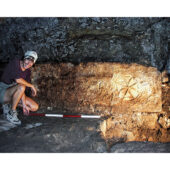
Where Did Jesus Turn Water into Wine?
By: Robin Ngo

The Palace of the Kings of Israel—in the Bible and Archaeology
By: Megan Sauter
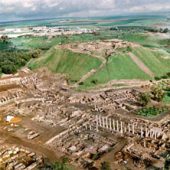
Beth Shean in the Bible and Archaeology
By: Biblical Archaeology Society Staff
12 Responses
[…] 1. Wilderness Wanderings […]
My equinox year hypothesis is based on the idea that before the Assyrian cultural dominance in the Levant (i.e. before 750 B.C.E.) the Israelites used a 6 month period as the year. Then the Exodus would be in the first part of the 11th century. It fits the chronology of the layer 4c (on page 41 in the article). The next question is, is there any evidence it was occupied by the Israelites? And the next question is, is there any evidence that they came from Egypt?
Almost everything the socalled experts tell us about archaeology is wrong when it comes to precise dating. Relative dating is pretty accurate. But they’ve sold us a bill of goods with the timeline.
The Mountain that Burned with Fire has been estalished as in Saudi Arabia. When Israel crossed the Red Sea, it was that part now called The gulf of Aqaba. To look for Kadesh Barnea in the so-called Sinai Peninsula seems to me to be a very bad diversion. If the current idea can be reached from Saudi Arabia it would seem possible, and would fit with another scripture. When Israel was finally to go into the land they had to go AROUND the land of Edom, indicating that they were to the west and south of it. Since Eilat became a major port for Solomon, it would add to the possibility.
http://wol.jw.org/en/wol/d/r1/lp-e/1200002564#h=1:0-9:570
KADESH (Kaʹdesh) [Holy Place], Kadesh-barnea (Kaʹdesh-barʹne·a) [Holy Place of Barnea].
An Israelite wilderness encampment situated at the extremity of Edomite territory near “the way to Shur,” perhaps the modern Darb el-Shur extending from Hebron to Egypt. (Ge 16:7, 14; Nu 20:14-16 [Heb. ʽir (city) at Nu 20:16 may simply mean encampment; compare Nu 13:19.]) Apparently 11 days’ travel distance by way of Mount Seir separated Kadesh-barnea from Horeb.—De 1:2.
Kadesh is spoken of as being located in both the Wilderness of Paran and the Wilderness of Zin. Possibly Zin and Paran were adjoining wildernesses that met at Kadesh, and therefore, the site could be referred to as lying in either one. Or, the Wilderness of Zin may have been part of the larger Wilderness of Paran. (Nu 13:26; 20:1) In Abraham’s time the place was known both as En-mishpat and as Kadesh. (Ge 14:7; 20:1) It is perhaps the same site as Kedesh.—Jos 15:21, 23.
ʽAin Qedeis, about 80 km (50 mi) SSW of Beer-sheba, has been suggested as a possible identification for Kadesh. In the midst of a desolate wilderness (compare De 1:19), the pure and sweet water of the spring at Qedeis supports an oasis of grass, shrubs, and trees. There are also two other springs in the vicinity, ʽAin el-Qudeirat and ʽAin el-Qeseimeh. Today the largest of the three springs is ʽAin el-Qudeirat, and for this reason some favor identifying it with Kadesh-barnea. However, ʽAin Qedeis is the most easterly spring. Consequently, the identification of ʽAin Qedeis with Kadesh-barnea seems to be more in line with the description of the E-W course of Canaan’s southern boundary: Kadesh-barnea (ʽAin Qedeis?), Hazar-addar (ʽAin el-Qudeirat?), and Azmon (ʽAin el-Qeseimeh?).—Nu 34:3-5.
If the Israelites did encamp in this area, because of the vast multitude they doubtless used all three springs. For example, the encampment just before crossing the Jordan spread out “from Beth-jeshimoth to Abel-shittim.” (Nu 33:49) That was a distance of about 8 km (5 mi), according to the suggested sites for those places. The distance from Kadesh-barnea (ʽAin Qedeis) to Azmon (ʽAin el-Qeseimeh) is about 14 km (8.5 mi); and to Hazar-addar (ʽAin el-Qudeirat) is 9 km (5.5 mi). So, for them to have used all three springs is not an unreasonable possibility. It is also possible that the whole area was called Kadesh-barnea with the name preserved in the SE spring.
There would be no evidence even if it the famous Biblical site because the Israelites didn’t have permanent settlements during the Exodus. Over the years many people would have camped at the site especially if there was water nearby. But because there is likely to be no physical evidence of the Exodus people will always scoff at the idea that the Exodus actually took place. The Hyksos for example left Egypt shortly before the Exodus, but have we any evidence of their sojourn into Canaan and other parts of the Middle East? No. It was no different for the Israelites and the Exodus after all it happened about 2500 years ago.
Kadesh-Barnea in the Eastern Sinai is a place I know from the recent wars between Egypt and Israel, but I tend to believe that if an Exodus took place at one time, it had to be some place where there are some signs that such a mighty host of people camped for 40 years, and the best candidate is the Hezaj. However, if, contrary to the Bible story, the Exodus was a durative phenomenon that took place over a very long time, then the Kadesh Barnea of the 20th century wars can be where most people believe it to be. There simply isn’t enough collaboative archaeological data accumulated to ascertain with any degree of certainty.
From Egypt to the Promised Land People everywhere know of the Exodus from Egypt. But what awaited Moses and God’s people after they crossed the Red Sea? Where did they head, and how did they reach the Jordan River to enter the Promised Land?
Exodus Route Their goal was the land of Canaan, yet Moses did not take the shortest route—about 250 miles [400 km] along the sandy coast—which would have led straight through Philistia, enemy territory. Nor did he head across the vast center of the Sinai Peninsula, where intense heat baked the gravel and limestone plateau. No, Moses led the people south, down the narrow coastal plain. The first camp was at Marah, where Jehovah made bitter water turn sweet.* After leaving Elim, the people murmured for food; God sent quail and then manna. At Rephidim, water was again an issue, attacking Amalekites were vanquished, and Moses’ father-in-law urged him to get help from capable men.—Ex, chaps. 15-18.
Moses then led Israel toward the mountains farther south, camping at Mount Sinai. There God’s people received the Law, built the tabernacle, and offered sacrifices. In the second year, they went north through a “great and fear-inspiring wilderness,” the journey to the area of Kadesh (Kadesh-barnea) apparently taking 11 days. (De 1:1, 2, 19; 8:15) Because of becoming fearful over a negative report from ten spies, the people had to wander for 38 years. (Nu 13:1–14:34) Among their stops were Abronah and Ezion-geber, and then they went back to Kadesh.—Nu 33:33-36.
When it was finally time for Israel to approach the Promised Land, the Israelites did not move due north. Their route took them around Edom’s heartland and up “the king’s road,” the King’s Highway. (Nu 21:22; De 2:1-8) It was not easy for a whole nation—with children, animals, and tents—to move over this trail. They had to wind down into and climb back out of formidable gorges—the Zered and the Arnon (nearly 1,700 feet [520 m] deep).—De 2:13, 14, 24.
Finally, the Israelites reached Mount Nebo. Miriam had died at Kadesh, and Aaron, at Mount Hor. Moses now died in sight of the land he had desired to enter. (De 32:48-52; 34:1-5) It fell to Joshua to lead Israel into the land, ending a journey begun 40 years earlier.—Jos 1:1-4. Also called En-mishpat; Kadesh-barnea.photos of oasis near: http://wol.jw.org/en/wol/d/r1/lp-e/1200273219#h=2
Of course you won’t find Kadesh in the Sinai, They crossed the Red Sea and stayed on the Arabian side for 40 years. It’s over there someplace.
A step by step the puzzle of Exodus will be uncovered. Hopefully there will be also the findings from anthropology field. Thank you BAR BAS BHD.
Write a Reply or Comment Cancel reply
Your email address will not be published. Required fields are marked *
Recent Blog Posts

The “Pillow Psalter” Returns

Were Mary and Joseph Married or Engaged at Jesus’ Birth?

Saint Salome’s Resting Place?
Must-read free ebooks.
50 Real People In the Bible Chart

The Dead Sea Scrolls: Past, Present, and Future

Biblical Peoples—The World of Ancient Israel

Who Was Jesus? Exploring the History of Jesus’ Life
Want more bible history.
Sign up to receive our email newsletter and never miss an update.
By submitting above, you agree to our privacy policy .
All-Access Pass

Dig into the world of Bible history with a BAS All-Access membership. Biblical Archaeology Review in print. AND online access to the treasure trove of articles, books, and videos of the BAS Library. AND free Scholar Series lectures online. AND member discounts for BAS travel and live online events.
Signup for Bible History Daily to get updates!
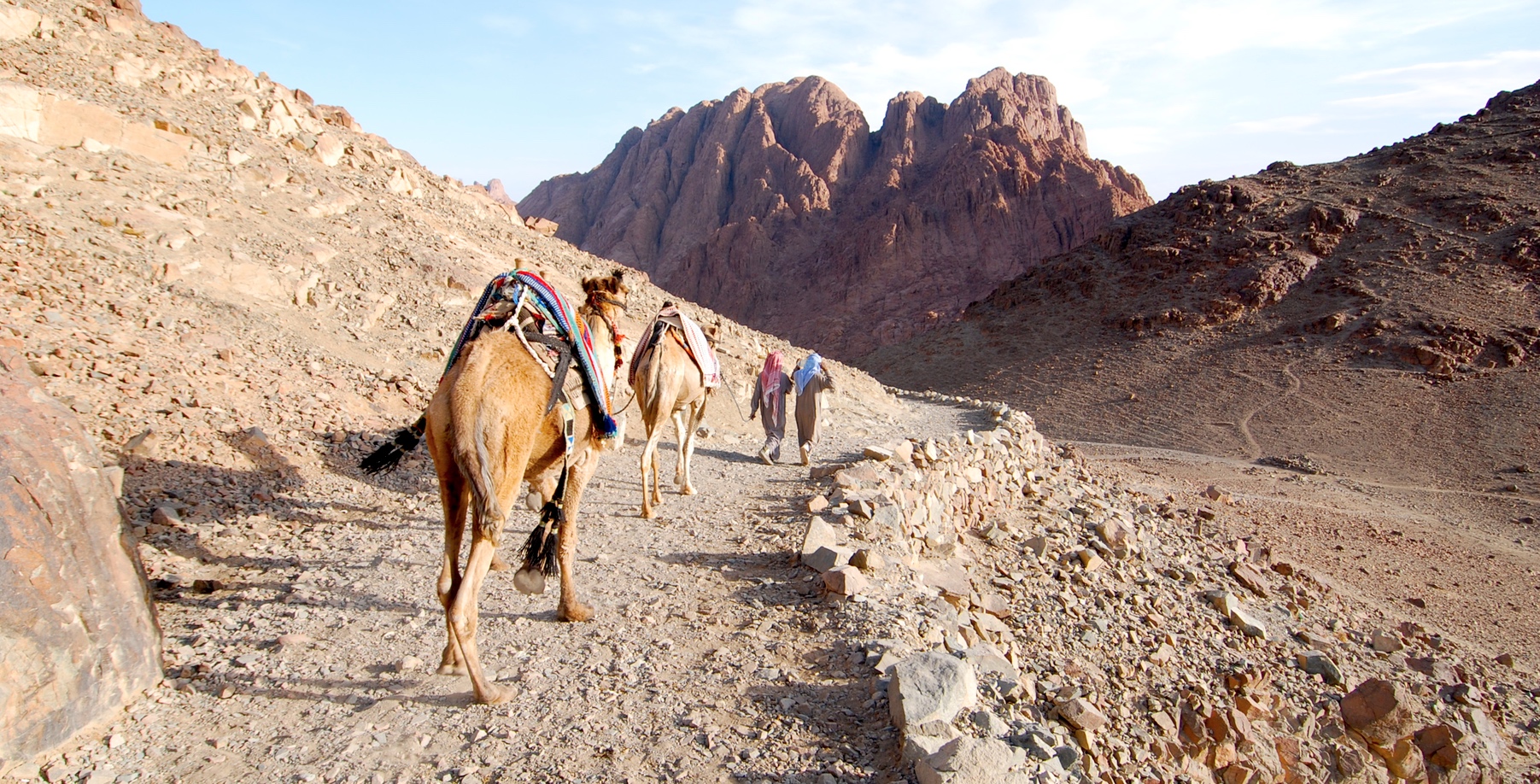
Biblical Historical Context
A Christian layman’s perspective on the intersection between archaeology, historical criticism, text, and faith.
- Custom Social Profile Link
The Exodus Itineraries
9 minute read
Reading itineraries has a similar effect on the mind as reading genealogies . But, it’s worth ploughing through them for the same reason we should suffer the name lists – there’s often more in there than meets the eye. The Exodus itineraries are no exception.
There are three main sources in the Hebrew Bible for the Israelites’ itinerary through the wilderness between Egypt and Canaan:
- Numbers 33 – It sticks fairly closely to an itinerary format, i.e. “They set out from X and camped at Y”, making it quite easy to draw up a list of all the places the Israelites passed through.
- The narratives found in Exodus and Numbers – This itinerary takes a little more work to extract, but it’s not too much hassle. It begins in Rameses (Exodus 12:37) and ends on the plain of Moab (Numbers 22:1).
- Moses’ speech in Deuteronomy 1-3 – Here the Israelites’ journey begins at Mt Sinai (Deuteronomy 1:19) and ends in the valley opposite Beth-peor (Deuteronomy 3:29).
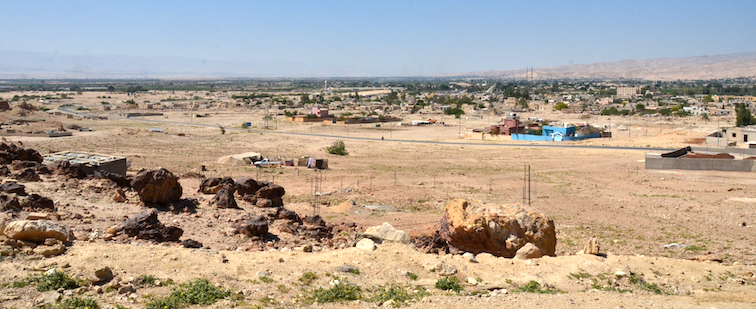

Overview of the itineraries
Here’s a short summary of each itinerary. Bear in mind that most of the places mentioned in all three sources have not been firmly identified, 1 neither does their location really matter for what we’re dealing with in this post. So we’re sticking with the traditional locations for now.
The Israelites leave Rameses (Nu 33:3), cross the Red Sea (Nu 33:8), wander through the wilderness of Sin (Nu 33:11), finally arriving at Sinai (Nu 33:15).
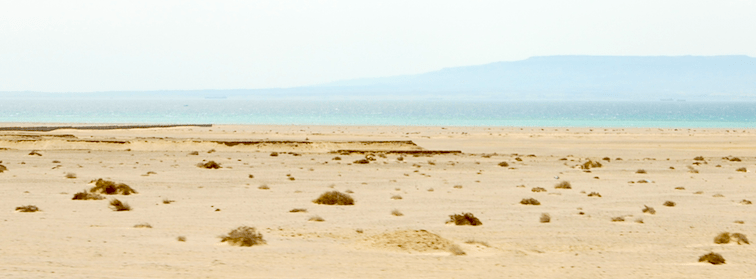
After leaving Sinai they head through the Sinai desert passing through Hazeroth (Nu 33:17) up to Ezion Geber near modern Eilat (Nu 33:35) on their way to Kadesh in the wilderness of Zin (Nu 33:36).
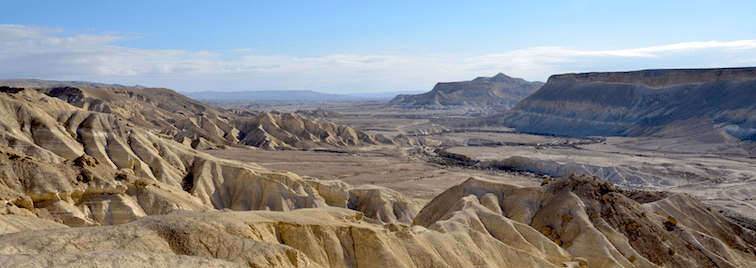
From Kadesh they head east (Nu 33:40), through Oboth (Nu 33:43) up onto the Transjordanian plateau (Nu 33:44).
They then head north up the King’s Highway straight through the territory of Moab through Dibon (Nu 33:45).

From there they continue up through Moab to Nebo, then west down into the Plain of Moab opposite Jericho (Nu 33:48).
Here’s what it looks like on a map:

Exodus & Numbers narratives
From Rameses (Ex 12:37) the Israelites travel to the point opposite Migdol (Ex 14:2), and cross the Red Sea (Ex 14:22). They then head via the wilderness of Sin (Ex 16:1) and Rephidim (Ex 17:1) to Sinai (Ex 19:1-3).
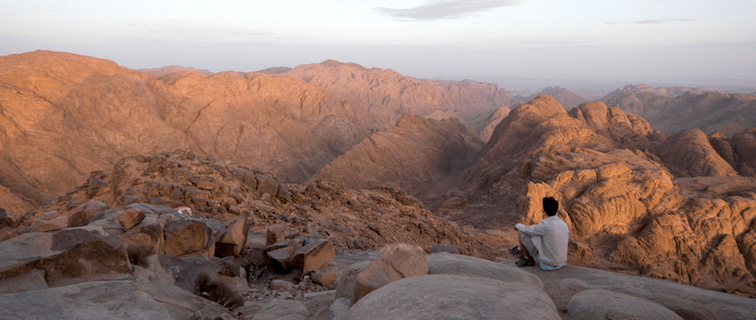
After receiving the law they head north via Hazeroth (Nu 11:35) to Kadesh (Nu 13:26) from where the 12 spies are sent out.
As a result of the faithless report brought back by the spies the Israelites are condemned to wander in the wilderness for forty years (Nu 14:33-35) in the region of the Aravah (Nu 14:25).
After many years they come back to Kadesh (Nu 20:1) where Miriam dies. Next they go to Mt Hor, where Aaron dies (Nu 20:22-29). From there they head east to the Aravah – the Jordan Valley south of the Dead Sea – and travel on the Way to the Red Sea (Nu 21:4). Going through Oboth (Nu 21:10) they climb onto the Transjordanian plateau (Nu 21:11)
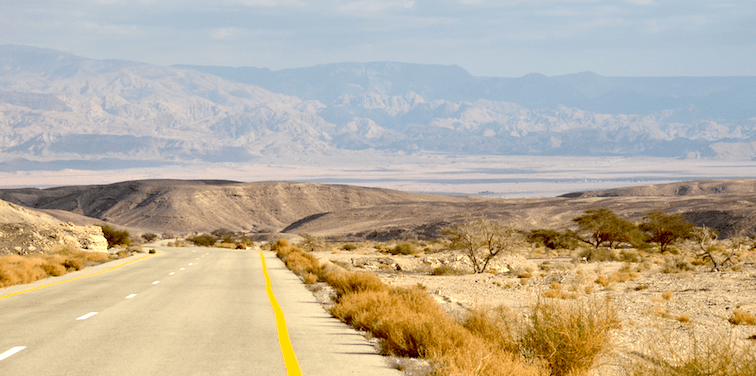
The Israelites then head north to the river Zered (Nu 21:12) and continue on to the river Arnon (Nu 21:13). Still moving north they travel through Moab until they get to the top of Pisgah (Nu 21:20). After conquering the Transjordan (Nu 21:21–35) the Israelites head west down onto the Plain of Moab opposite Jericho (Nu 22:1).

And now in map form:
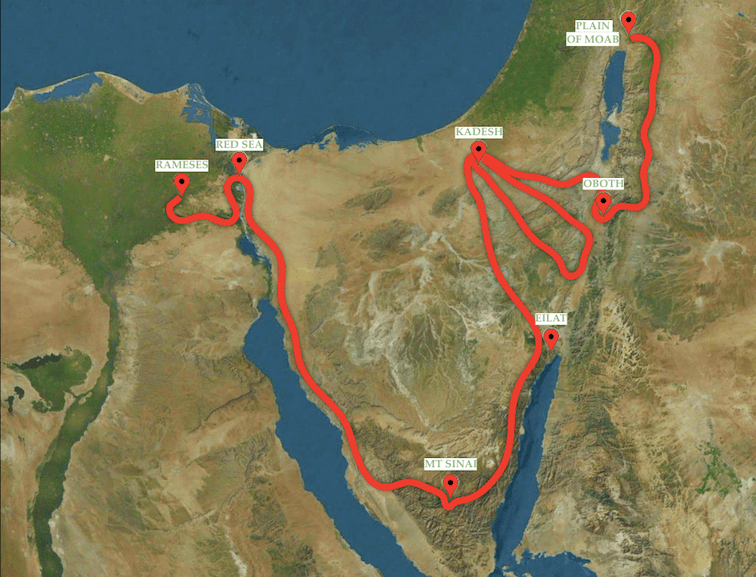
Moses’ speech in Deuteronomy
Slightly unconventionally, this itinerary begins with the Israelites at Mt Sinai. From there they speed through to Kadesh (Dt 1:19) from where the spies are sent out (1:22–39).
The Israelites are then told to head back into the wilderness toward the Red Sea (Dt 2:1) and “skirt Mount Seir for many days” (Dt 2:1) – Mount Seir is the name for the range of hills to the east of the Aravah north of Eilat. 2
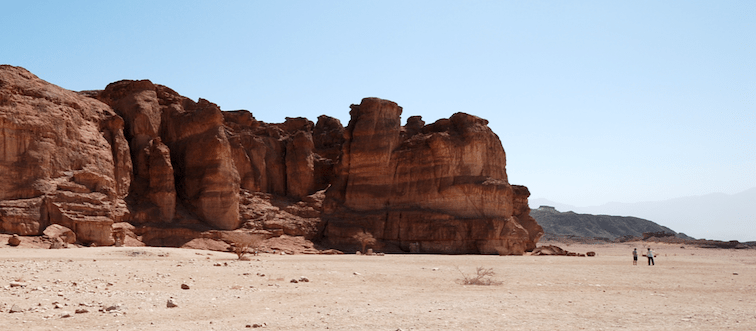
They wander in this area (described as being the area of the Aravah, Eilat, and Ezion Geber) for a long time (Dt 2:3) and then head into Mt Seir (Dt 2:8) – following the modern route from Aqaba to Wadi Rum in the direction of Moab.
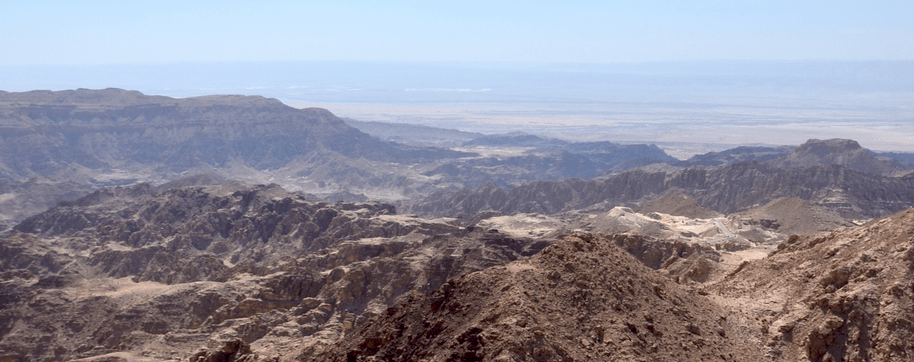
Along the way the Israelites cross the River Zered (Dt 2:13) where the last of the Israelites who left Egypt die off (Dt 2:14-15).
Having been told not to engage the Moabites in warfare (Dt 2:9) who were located at this time between the Zered and the Arnon they head north peacefully to the River Arnon (Dt 2:24).

Once across the Arnon the Israelites take all the cities from there (Aroer being nestled on the northern edge of the Arnon), up to Gilead (Dt 2:36) in a thin strip to the east of the Kingdom of the Ammonites (Dt 2:37).
After fighting Og king of Bashan (Dt 3:1-7) and dividing up the territory they’d captured (Dt 3:8-17) we find the Israelites camped in the valley opposite Beth-peor (Dt 3:29).
And, on a map:
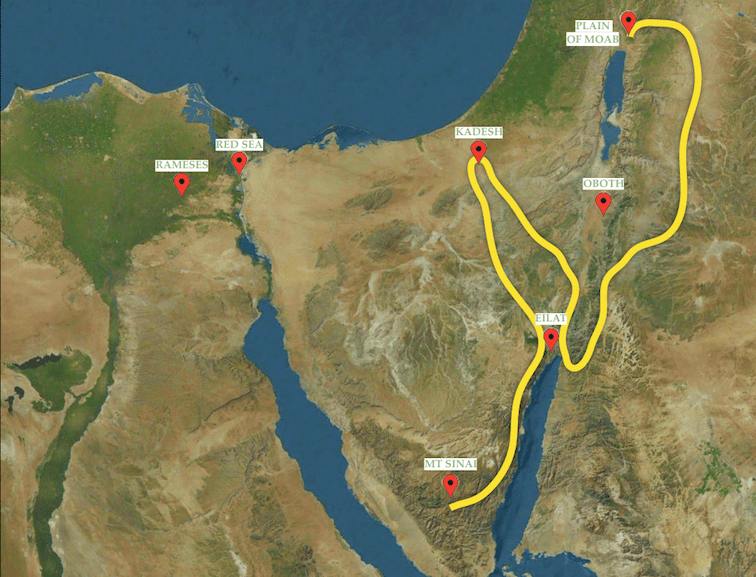
If it’s not clear yet, we’re dealing with quite different itineraries.
Combining the itineraries
If we place all three itineraries on the same map we get the following:
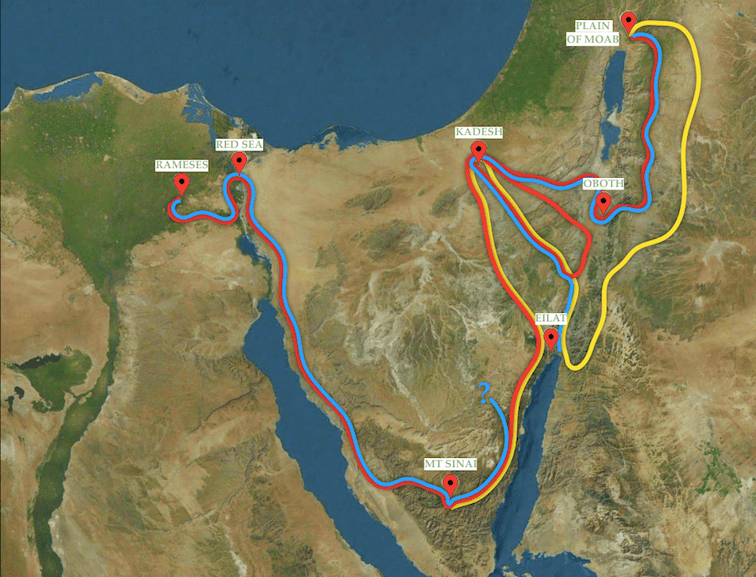
See? Itineraries are interesting.
Differences
Let’s highlight a couple of differences between the itineraries:
- The Exodus and Numbers narratives place the decades of wilderness wandering between the two visits to Kadesh. The first time they visit the spies are sent out; the second time they visit Miriam dies. Numbers 33 on the other hand has only one visit to Kadesh. Moses’ speech in Deuteronomy also has only one visit. The Deuteronomy itinerary does mention the wilderness wandering, but it is explicit in that when they’re finished wandering the Israelites head into Mt Seir; not Kadesh which would be in almost the opposite direction.
- In Numbers 33 and the Exodus and Numbers itineraries the journey from Kadesh (the only time in Numbers 33 and second visit in the Exodus and Numbers itinerary) to the Transjordanian plateau goes due east through Zin, across the Aravah and through Oboth before walking through the ravines up onto the Transjordanian plateau. In Deuteronomy on the other hand the Israelites head from Kadesh (their only visit) south-east towards Eilat, and from there they head through the Wadi Rum area and then head north.
These differences between the itineraries cannot be reconciled. You cannot visit Kadesh both only once and twice. You cannot travel from Kadesh both due east across the Aravah into Transjordan and south to Eilat and up into the Edomite hills in the direction of Wadi Rum.
A known problem?
We are not the first to stumble across these differences, so let’s see what others have written on the matter.
First up is Aharoni, a towering figure in the archaeology of Israel. Discussing the Kadesh-to-Plain-of-Moab itinerary of Deuteronomy vs. that found in the Numbers narrative he writes:
It would seem, therefore, that there are preserved here memories of two different journeys, the first in the fourteenth century to the plains of Moab before the various kingdoms in this area became organised, and the second in the thirteenth century which led around Edom and Moab along the fringe of the desert and which ended in the conquest of Heshbon. These different routes constitute one of the conclusive evidences that the Israelite conquest was not carried out in one campaign or at one time but rather continued in several waves which were blended together in the tradition to a single campaign of conquest. 3
Brown in his Expositional Bible Commentary provides no explanation for the differences, but he does note that they exist:
Moses recounts the way in which God brought the people to the border of Canaan by a different route and to a different place from the first occasion. 4
And before launching into an excellent treatment of the problem Tigay in the JPS Torah Commentary on Deuteronomy wryly notes:
There are several apparent discrepancies between these descriptions of the Israelites’ route. 5
So, we’re dealing with a known problem. The itineraries are different.
Is there an explanation for the differences?
In Aharoni’s writings we see one attempt to explain the problem: the different itineraries are attributed to different Exoduses. One itinerary was followed by one group at one point in time, another itinerary was followed by a different group at a different point in time.
Others have attempted to “fix” the itineraries, e.g. finding a second Kadesh in the Numbers 33 itinerary – they claim that Nu 33:16’s Kibroth Hattaavah is another name for Kadesh. 6 This however doesn’t work – Kibroth Hattaavah is somewhere that the Israelites visit on their way to Kadesh (cf. Nu 11:34 & 13:26).
Others claim that the Exodus and Numbers narratives along with the Numbers 33 itineraries simply miss out the portion of the journey that took them down to Eilat and up into the mountains of southern Jordan, thus reconciling the Deuteronomy itinerary with the others. 7
Finally, in the view of those following critical approaches, the inconsistencies between the itineraries are the result of a late editor weaving together ancient sacred documents, not feeling like they could change or cut out sections which made the final product contradictory. 8
Conclusions
What can be learned from this?
Robustly made and pious sounding claims of internal consistency within the biblical text are nothing but bluster and wishful thinking. Any such claims don’t match the evidence – discrepancies exist, as the various Exodus itineraries demonstrate.
If discrepancies in the Bible make us uncomfortable that only tells us that our understanding of the nature of the text needs adjusting.
Finally, instead of making untrue – and therefore disrespectful – claims about the nature of the text, we should base our understanding of it on what we find in it, and we should do so in a humble and inquiring manner.
So, let’s work with what the text says, not try to pretend it says something else.
Further reading
- An excellent introduction to the discrepancies between the various Exodus itineraries can be found in “Excursus 2: The Chronology and Route of the Wanderings from Kadesh to Transjordan” in Jeffrey H. Tigay, Deuteronomy (The JPS Torah Commentary; Philadelphia: Jewish Publication Society, 1996), 425–429.
Featured image
A photo I took on the way down from the top of Jebel Musa, the traditional site of Mt Sinai.
Baruch A. Levine, Numbers 21–36: A New Translation with Introduction and Commentary (vol. 4A; Anchor Yale Bible; New Haven; London: Yale University Press, 2008), 511. ↩
Ernst Axel Knauf, “Seir (Place),” ed. David Noel Freedman, The Anchor Yale Bible Dictionary (New York: Doubleday, 1992), 1072–1073. ↩
Yohanan Aharoni, The Land of the Bible (Philadelphia, Pensylvania: Westminster Press, 1979), 205-206. ↩
Paul E. Brown, Deuteronomy: An Expositional Commentary (Exploring the Bible Commentary; Leominster, UK: Day One Publications, 2008), 22. ↩
Jeffrey H. Tigay, Deuteronomy (The JPS Torah Commentary; Philadelphia: Jewish Publication Society, 1996), 426. ↩
Ibid, 428. ↩
Ibid. ↩
You May Also Enjoy

A file for the mattocks!?
How archaeology can inform Bible translation.

The Black Obelisk’s journey from Nimrud to London
42 minute read
The pretty wild ride that the Black Obelisk took from Nimrud, where it was found, to the British Museum, where it’s displayed to this day.
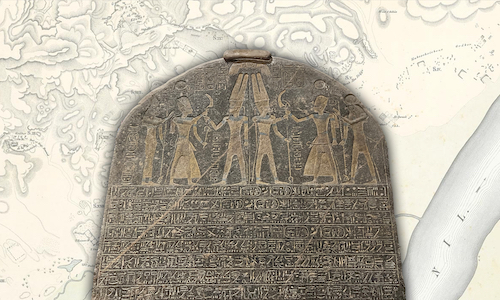
The Merneptah Stele: Beyond Apologetics
34 minute read
The Merneptah Stele’s discovery, transcription, and what it shows us about annihilation in the biblical text.

The Tel Dan Stele: Beyond Apologetics
53 minute read
The Tel Dan Stele’s discovery, the debate it caused, and how it shows that scripture sometimes doesn’t work the way we think it does.
This website uses cookies to improve your experience. By continuing to use our site, you consent to our use of cookies.
> Privacy Policy
- Old Testament Leader Guide GNT
- New Testament Leader Guide GNT
- Breakthrough Bible NABRE Leader Guide
- The Catholic Youth Bible®, 4th Edition
- The Catholic Children's Bible
- Discover! Online Director's Manual
- Connect! Bringing Faith to Life
- Connect! Activity Book
- Connect! Catechist Guide Year 1
- Connect! Catechist Guide Year 2
- Connect! Catechist Guide Year 3
- Connect! Bringing Faith to Life Student Book
- Connect! Church History Student Book
- Connect! Teacher Guide Year 1 Part 1
- Connect! Teacher Guide Year 1 Part 2
- Connect Teacher Guide Year 2 Part 1
- Connect Teacher Guide Year 2 Part 2
- Connect Teacher Guide Year 3 Part 1
- Connect Teacher Guide Year 3 Part 2
- Revelation and the Old Testament
- Jesus Christ and the New Testament
- The Paschal Mystery and the Gospels
- The Church Foundations and Mission
- Sacraments and God's Grace
- Morality and God's Love
- Director's Manual, Gathered Sessions and Retreat
- Called to Mercy 2024
- Reconciliation and Eucharist Kit
- Online Director's Manual
- Reconciliation Teaching Guide
- Reconciliation Teaching Guide (Spanish)
- Eucharist Teaching Guide
- Eucharist Teaching Guide (Spanish)
- Confirmation Teaching Guide
- Confirmation Teaching Guide (Spanish)
- Reconciliation Home Guide
- Eucharist Home Guide
- Confirmation Home Guide
- Understanding Catholicism
- Creating Justice
- The Living Word
- Jesus Christ
- The Paschal Mystery
- The Sacraments
- Christian Morality
- The New Testament
- Catholic Social Teaching
- Church History
- Teacher Guide
- Catechist Guide
- Old Testament Teacher Guide
- New Testament Teacher Guide
- The Old Testament, the Trinity, and the Mission of Christ
- The New Testament, the Church, and the Sacraments
- Christian Morality and Prayer
- The Old Testament and the Trinity
- The Prophets, Jesus Christ, and the Holy Spirit
- The New Testament and the Church
- Liturgy and Sacraments
- Christian Morality and Social Justice
- Prayer and Church History
- Understanding Catholic Christianity
- Living Justice and Peace
- Anointed in the Spirit Middle School Catechist Guide
- Divorce and Beyond Spanish Edition
- The Catholic Church
- Growing in Christian Morality
- Creating a Christian Lifestyle
- Understanding Catholic Christianity (1996)
- Jesus of History, Christ of Faith
- Celebrating Sacraments
- Living Justice and Peace (2008)
- Written on Our Hearts
- World Religions (2015)
- Liturgical Calendar
- Feast Day Activities
- Stations of the Cross
- Marian Events
- Penance Services
- Catholic Culture
- In Class Prayer Services
- Learning to Pray
- Reflections
- Christology
- Ecclesiology
- Social Justice
- World Religions
- Youth Ministry
- Coloring and Crafts
- Crosswords and Word Activities
- Discussion-Oriented
- Skits and Dramas
- Other Activities
- Classroom Management
- Review Exercises
- Quiz and Essay Questions
- Posters and Charts
- PowerPoints
- Recommended Websites
We are open until 11 AM on Good Friday, March 29, reopening with normal business hours as of April 1.
Home > Media > Images
Map of the Israelite Journey: Out of the Wilderness, Into the Promised Land
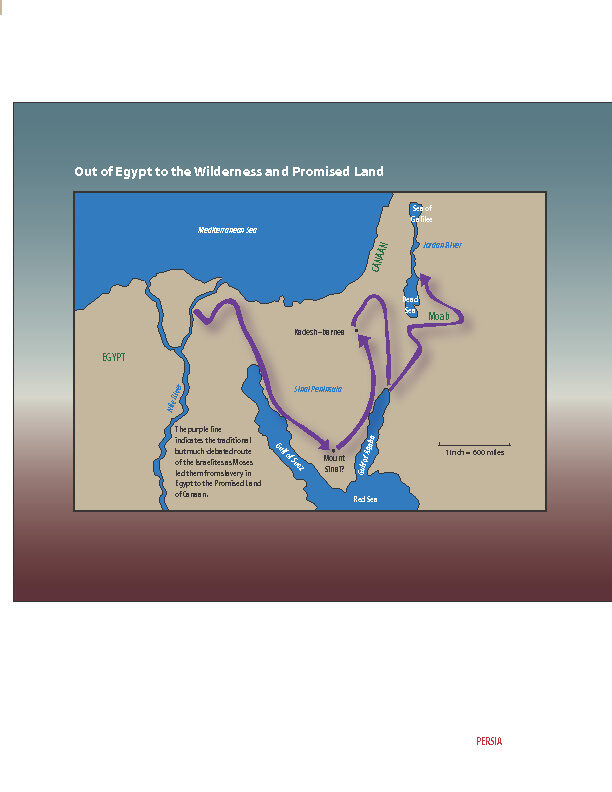
About this image
Copyright © Saint Mary's Press. This image may be saved, printed or downloaded for personal and educational (non-commercial) use. All other uses require written permission from the publisher.
Related Text
- Map of 'Out of Egypt to the Wilderness and Promised Land'
- Paul's Journeys - PowerPoint
- Map of The Founders Journeys
- The Life of Moses: A Chronology
- Chapter 2 Activity: A Salvation History Time Line
- Map of the Exile and Back Home
- Empires of the Ancient Near East
Related Images
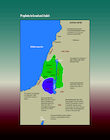
Map of the Prophets to Israel and Judah

Map of the Journeys of Abraham, Jacob and Joseph - The Founders

Map of the Exile to Babylon and Back to Jerusalem
- Bible Grant Program
- Rights & Permissions
- Submissions
- Privacy Policy
- DEI Statement
- High School
- Middle School
- All Products
- Order History
- Return Policy
- Parish Online Catalog
- K-8 Online Catalog
- High School Catalog
Ministry Care Team
- 800-533-8095
- International Distributors
Copyright © 2024 Saint Mary's Press. All rights reserved. • Privacy Policy
One blog, countless inspirations
Head to our blog to learn how to more effectively touch hearts and change lives through stories, saints, and scripture.
Take a Look
The Exodus Route: Wilderness of Sinai (camp for 11 months, 5 days)
Note: for more specific details on the final camp at Sinai, see: Mt. Sinai
Discussion:
a. Israel arrived at the final camp in front of Mt. Sinai in the Wilderness of Sinai on day 47 from Goshen: Ex 19:1
b. Scripture never says Israel camped in the Wilderness of Sinai then journeyed to the foot of Mt. Sinai .
c. Instead scripture equates the wilderness of Sinai as being equal to the final camp in front of Mt. Sinai .
d. " In the third month after the sons of Israel had gone out of the land of Egypt, on that very day they came into the wilderness of Sinai . When they set out from Rephidim, they came to the wilderness of Sinai and camped in the wilderness; and there Israel camped in front of the mountain . " (Exodus 19:1–2)
e. In the Numbers 33 itinerary, the Wilderness of Sinai was the final camp spot for 11 months at Mt. Sinai: " They journeyed from Rephidim and camped in the wilderness of Sinai . [11 months, 5 days pass] They journeyed from the wilderness of Sinai and camped at Kibroth-hattaavah. " (Numbers 33:15–16)
f. Moses saw the burning bush in the wilderness of Sinai. The burning bush probably marked the spot where Israel would camp several month later after Moses returns with the Hebrews. “After forty years had passed, an angel appeared to him in the wilderness of Mount Sinai , in the flame of a burning thorn bush." (Acts 7:30)
g. The west side of the Wilderness of Sinai was at the foot of Mt. Horeb: "Now Moses was pasturing the flock of Jethro his father-in-law, the priest of Midian; and he led the flock to the west side of the wilderness and came to Horeb, the mountain of God. The angel of the LORD appeared to him in a blazing fire from the midst of a bush; and he looked, and behold, the bush was burning with fire, yet the bush was not consumed." (Exodus 3:1–2)
h. The 11-month camp at Mt. Sinai was identical to the camp in the Wilderness of Sin.
2. Israel's Arrival in the Wilderness of Sinai ends the most important stage of the journey. They have escaped the slavery of Egypt, have come to God and are about to receive the Law of Moses on Pentecost in a spectacular display of divine power (Heb 12).
3. They did not camp at the foot of Mt. Sinai, but about 10 km due east from the foot of the mountain.
a. "let them be ready for the third day, for on the third day the Lord will come down on Mount Sinai in the sight of all the people. You shall set bounds for the people all around, saying, 'Beware that you do not go up on the mountain or touch the border of it; whoever touches the mountain shall surely be put to death." Exodus 19:11-12
b. Moses went into the wilderness of Sinai and the people journeyed to the foot of Mt. Sinai: "And Moses brought the people out of the camp to meet God, and they stood at the foot of the mountain." Exodus 19:17
c. Even at the foot of the mountain they were still some distance from the edge of the mountain: "So the people stood at a distance, while Moses approached the thick cloud where God was. " Exodus 20:21
d. All this leads us believe that the Hebrew camp in the wilderness of Sinai was likely 10 km due east from the foot of the mountain.
4. Bible texts:
a. "In the third month after the sons of Israel had gone out of the land of Egypt, on that very day they came into the wilderness of Sinai. When they set out from Rephidim, they came to the wilderness of Sinai and camped in the wilderness; and there Israel camped in front of the mountain." Exodus 19:1-2
b. "They journeyed from Rephidim and camped in the wilderness of Sinai. They journeyed from the wilderness of Sinai and camped at Kibroth-hattaavah." Numbers 33:15-16
c. "which the Lord commanded Moses at Mount Sinai in the day that He commanded the sons of Israel to present their offerings to the Lord in the wilderness of Sinai." Leviticus 7:38
d. "Then the Lord spoke to Moses in the wilderness of Sinai, in the tent of meeting, on the first of the second month, in the second year after they had come out of the land of Egypt, saying," Numbers 1:1
e. "just as the Lord had commanded Moses. So he numbered them in the wilderness of Sinai." Numbers 1:19
f. "But Nadab and Abihu died before the Lord when they offered strange fire before the Lord in the wilderness of Sinai; and they had no children. So Eleazar and Ithamar served as priests in the lifetime of their father Aaron." Numbers 3:4
g. "Then the Lord spoke to Moses in the wilderness of Sinai, saying," Numbers 3:14
h. " Thus the Lord spoke to Moses in the wilderness of Sinai, in the first month of the second year after they had come out of the land of Egypt, saying," Numbers 9:1
i. "They observed the Passover in the first month, on the fourteenth day of the month, at twilight, in the wilderness of Sinai; according to all that the Lord had commanded Moses, so the sons of Israel did." Numbers 9:5
j. "and the sons of Israel set out on their journeys from the wilderness of Sinai. Then the cloud settled down in the wilderness of Paran." Numbers 10:12
k. "But among these there was not a man of those who were numbered by Moses and Aaron the priest, who numbered the sons of Israel in the wilderness of Sinai." Numbers 26:64
By Steve Rudd: Contact the author for comments, input or corrections .
Go To Start: WWW.BIBLE.CA
1871 Map of the Journeyings of the Children of Israel From Egypt, through the Wilderness, to Caanan "These are the journeys of the children of Israel, which went forth out of the land of Egypt with their armies under the hand of Moses and Aaron." Numbers 33:1 Please be patient while this downloads (kept large for clarity)
WANDERINGS OF ISRAEL The activities of the Israelite tribes during the period between their departure from Egypt under Moses and the time when they were encamped by the Jordan River, ready to be led into Canaan by Joshua. The period of time covered by these events is traditionally 40 years, much of which was spent in the area of KADESH-BARNEA. The Israelite journeyings are commonly spoken of as "wilderness wanderings," because they took the people through some areas that were known as wilderness. In order to understand the nature of the wanderings, it is important to realize the difference between a wilderness and a desert. A desert is best imagined as a barren expanse of sand dunes or a rocky area that does not support any vegetation. Although a wilderness may also have barren areas, it has grassy upland plains, oases, springs, and vegetation such as flowers, shrubs, and trees that can support a surprising variety of animal life. The Sinai Mountain range where the Hebrew people wandered appears rugged and inhospitable when viewed from the air. But when approached by land, it shows it has sizeable grassy areas and upland plains. (An excerpt from Nelson's Illustrated Bible Dictionary) Return to the Everlasting SEASON Home .~ Plough .~ Seeds .~ Vine .~ Potter .~ Seasons .~ Sonshine .~ Rain .~ Field
Wanderings Of Israel
Israel's Wilderness Camp Picture
Every man of the children of Israel shall pitch by his own banner, with the banner of their father’s house. They shall pitch far off, around the tabernacle of the congregation (Numbers 2:2, HBFV throughout).
The tents of Moses and Aaron, also located in the center of the encampment with the tabernacle, were placed in front of the its eastern entrance. Camping with them were the sons of Aaron who were priests.
And those who camp before the tabernacle toward the east, before the tabernacle of the congregation eastward, shall be Moses, and Aaron and his sons, keeping the charge of the sanctuary for the charge of the children of Israel. And the stranger that comes near shall be put to death (Numbers 3:38).

The three sons of Levi who migrated to Egypt along with Jacob and the rest of his family were Gershon, Kohath and Merari (Genesis 46:11). Years later, after God dedicated the tribe to serve him as priests, he assigned responsibilities to each of these major families in regard to maintaining his tabernacle. This is why the Kohathites, Gershonites and Merarites were the nearest groups to set up their tents around the tabernacle (on the south, west and north sides).
The Eastern Grouping
The first grouping of tribes in the wilderness encampment would face East toward the rising sun (which was the general direction they were traveling in - Numbers 2:3). They would be the first to leave the camp. Next in line to leave would be the tribes on the South side, then the Levites who serviced the tabernacle, then those on the West and finally those facing north.
The wilderness tents from the tribes of Judah, Issachar and Zebulun were placed together on the eastern side of the tabernacle and were collectively under Judah's banner. Judah, Issachar, and Zebulun were the three youngest sons of Jacob's (Israel's) wife Leah.
And those who pitch on the east side toward the rising of the sun shall be those of the banner of the camp of Judah, throughout their armies . . . (Numbers 2:3).
Judah was chosen to lead this first set of Israelites out of their wilderness camp not only because it was the most numerous tribe of Jacob, but also because it was prophesied that the scepter of rule would never leave them (Genesis 49:10). Christ, in the New Testament, is called "the Lion of the tribe of Judah" (Revelation 5:5). The number of fighting men on this side of the camp totals 186,400.
The Southern Grouping
The tribal camps of Reuben, Simeon and Gad were placed together on the southern side of the tabernacle and were collectively under Reuben's banner. Reuben, born through Leah, was the oldest son of all Jacob's children, with Simeon being the second oldest. Gad was born from Jacob and Leah's handmaid Zilpah. All together, they totaled 151,450 fighting men.
On the south side shall be the standard of the camp of Reuben, according to their armies . . . (Numbers 2:10).
The Western Grouping
The Western side of the wilderness encampment contained the tribes of Ephraim, Manasseh and Benjamin. They were collectively under the banner of Ephraim. Benjamin was born of Jacob's favorite wife Rachel. Ephraim and Manasseh were the product of Rachel' son Joseph. They were "adopted" by Jacob as full tribes (see Genesis 48). This group of Israelites contained 108,100 fighting men.
On the west side shall be the banner of the camp of Ephraim, according to their armies . . . (Numbers 2:18).
The Northern Grouping
The tribal camps of Dan, Asher and Naphtali, collectively under Dan's banner, were placed together on the northern side of the tabernacle. Dan is the oldest son of Jacob and Bilhah (one of Rachel's slaves). They totaled 157,600 men who could fight and were the last group in the wilderness to leave.
The banner of the camp of Dan shall be on the north side of their armies . . . (Numbers 2:25).
According to the Bible, the total strength of Israel's wilderness camp army was 603,550 men.
What About the Levites?
The tribe of Levi pitched their tents close to the wilderness tabernacle which they served. They left the camp after the southern grouping of the tribes but before the western grouping. They ended up marching in the middle of all the tribes with two divisions in front and two in back as they carried the Tent of Meeting or tabernacle (Numbers 2:17).
And the tabernacle of the congregation shall go forward with the camp of the Levites in the midst of the camp. As they camp, so they shall go forward, each man in his place, by their banners (Numbers 2:17).
Because God dedicated the Levites to serve as priests he did not have them numbered among Israel's wilderness camp army (Numbers 2:33). That said, some 38 years later a second census was carried out by Moses where the Levites were counted. The tribe consisted of three major clans (Numbers 26:57) and five subclans. This census found there existed 23,000 males, one month old or older, within the tribe of Levi (Numbers 26:62).
How to go to Heaven
How to get right with god.

Why was Israel cursed with forty years of wilderness wandering?
For further study, related articles, subscribe to the, question of the week.
Get our Question of the Week delivered right to your inbox!


Wilderness Wanderings
Ethnographic lessons from modern bedouin.
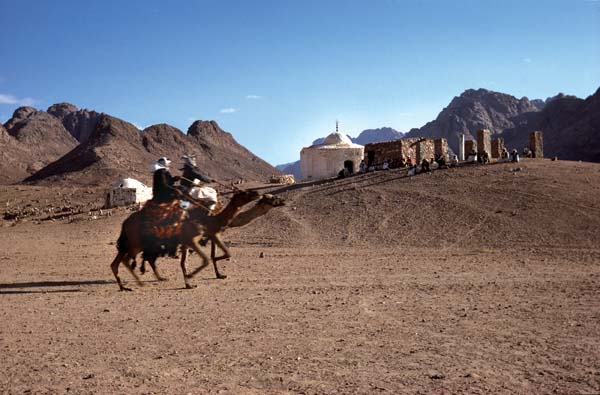
Does the narrative of the journeys of the Israelites in the wilderness have any authentic background? Could the wanderings really have taken place in Sinai? After all, as is frequently noted, there is a complete absence of any archaeological remains that would evidence their wanderings.
Every natural environment, however, has its unique characteristics, its natural possibilities. Human beings generally try to live and work in harmony with their varying natural environments.
This is certainly true of the Sinai Peninsula and the Bedouin who live there, at least until the modern technological revolution reached them at the end of the 20th century. And a comparison of the Bedouin way of life with that attributed to the Israelites in the wilderness after leaving Egypt may uncover a certain authenticity to the Biblical narrative not available otherwise. In short, we may be able to recognize in this comparison the historic and geographic background of the Israelites (or of one or more of the Israelite tribes) 034 as a nomadic group living and wandering in the desert.
We may begin with the very basic characteristic of Bedouin life: They live as nomadic shepherds.
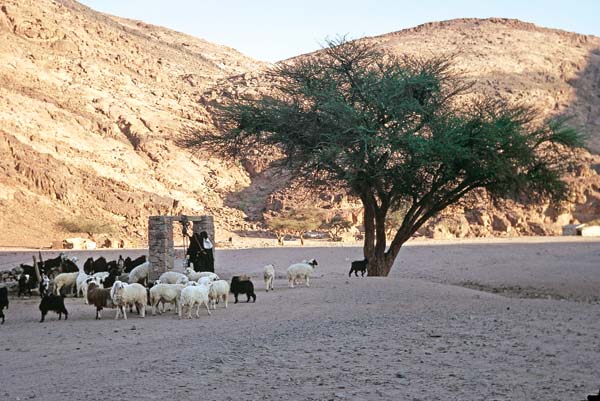
Journeys of nomadic Sinai tribes in years of drought to find pasturage for their flocks in Egypt were and are common. An ancient Egyptian document tells of the permission given nomads from Edom (in its general meaning as a large geographical area including southern Jordan, the Negev and the Sinai) to enter the area of the Nile Delta in a drought year, about 1200 B.C.E.:
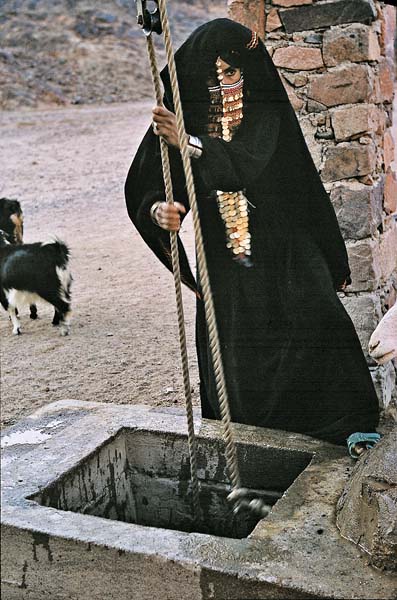
“The Scribe Inena communicating to his lord… life, prosperity, health… [We] have finished letting the Bedouin tribes of Edom pass the Fortress [of] Mer-ne-ptah… to keep them alive and to keep their cattle alive.” 1
But the Egyptians did not like the Bedouin: “All shepherds are abhorrent to Egyptians” ( Genesis 46:34 ).
The margins of the Nile Delta, like “the Land of Goshen” (where the Israelites settled), were a place of refuge for the nomads. Nomadic tribes would encamp at the edge of the irrigation channels in order to survive, and they almost certainly enjoyed the protection of the authorities as well as elementary food provisions. In return, the nomads would offer their labor. As the rulers became accustomed to exploiting this cheap manpower, it is no wonder that they would want to 035 maintain their hold over them. This is apparently the background for the enslavement of the Israelites.
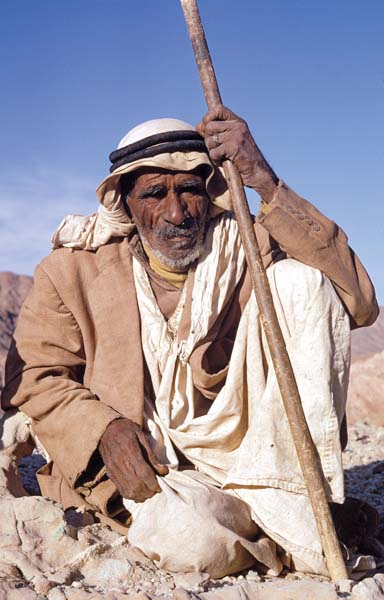
After Moses killed the Egyptian taskmaster and fled to Midian, he lived as a shepherd ( Exodus 2:11–15 ). He tended his father-in-law’s flock. He “drove the flock into the wilderness and came to the mountain of God, to Horeb” ( Exodus 3:1 ). When nomads settled along the margins of the Delta, it was natural for them, when flight was necessary, to flee to the desert, as did Moses. This is somewhat reminiscent of an early Egyptian papyrus that describes the pursuit of two escaped slaves who passed through the “Shur of Egypt” and escaped into the desert. 2
Intelligence and resourcefulness are characteristics of many Bedouin shepherds that I have known personally. Some of them have developed an excellent sense of observation that, together with their rich experience, aids them in locating sites to dig for water. Some are even able to strike rocks to get water, instead of digging… And so did Moses: “Moses raised his hand and struck the rock twice with his rod. Out came copious water, and the people and their beasts drank” ( Numbers 20:11 ).
“Let my people go, that they may hold a feast to me in the wilderness,” Moses tells Pharaoh in God’s name ( Exodus 5:1 ). If we understand it as is, the purpose of this request was to deceive Pharaoh and to conceal their intention to travel to their real destination: the Land of Canaan. But Pharaoh and his advisors are not naïve. They are not stupid. They “buy” this request to go into the desert because this “excuse” has a background in reality. It probably reflects the custom of pilgrimages to tombs, sacred places and mountains, a common custom among nomads. The Biblical words translated as “hold a feast to me in the wilderness” should be understood as “make a pilgrimage to me in the wilderness.” Even today this custom, called Zu’ara (“visit, pilgrimage”) is observed among the Sinai Bedouin, who make pilgrimage to their sheikhs’ tombs; some of these are tribal, whereas others are holy to all the tribes.

In Exodus 12 , the Lord (through Moses and Aaron) instructs the Israelites in the observance of the Passover festival, centering on the sacrifice of a lamb and the eating of unleavened bread ( matzah ). This festival has come to represent the entire story of the Exodus. Many scholars believe it finds its origins in an early shepherd custom before the herds were taken out to spring pastures. The Bedouin refer to this as Rabi’ah, that is, the going out to the far mountains for seasonal pasturage.
Instructions to hold the Passover feast were given to the Israelites while they were still in Egypt, just before the tenth plague—the slaying of the firstborn—that would finally induce Pharaoh to let the people go. As part of the instructions, the Israelites are told to take the blood of the slaughtered lamb and smear it on the doorposts and lintels of their houses ( Exodus 12:7 ). This will be the sign to the Lord to “pass over” the houses of the Israelites ( Exodus 12:22–23 ).
I have actually witnessed a similar Bedouin ritual at ‘Ain Fortaga in Sinai, in which, after sacrificing a goat, they smeared blood on camels’ necks, as well as on the children’s foreheads. This was 038 considered a wish for health, abundance and good fortune.
Matzah (unleavened bread) also has its origins in Bedouin life. The Bedouin call it libeh . Libeh is baked two or three times a day. It is made of a quick mixture of flour, water, a pinch of salt and, of course, no leavening. It is then baked on the burning coals of an open fire.
In the wilderness the Israelites lived in booths, rough temporary shelters. It was in commemoration of this that the festival of booths ( Sukkoth , or Tabernacles) was established, when for seven days the Israelites are to live in booths—“in order that future generations may know that I made the children of Israel to live in booths (b’sukkoth) when I brought them out of the Land of Egypt” ( Leviticus 23:43 ).

The date palm is the principal fruit tree of the Sinai. Booths made from date palms are common throughout the Sinai. Posts are made from the trunks, and walls and roofs are made from the fronds. The parts are fastened with ropes made of date fiber. These are temporary dwellings; the Bedouin live in these booths for a few weeks only, at the end of summer and during early autumn, when they stay in the oases. In this season the herds have finished feeding on the pasturage in the hills and the water sources there have dwindled. So the Bedouin assemble in the desert oases, where the water sources are perennial, grazing their herds in the surrounding area waiting for the first rains. During the autumn nights, the Bedouin “Date Festival” celebrates not only the harvest of dates but also the in-gathering of the tribes, who were scattered until now over the grazing areas, one family here and one family there.
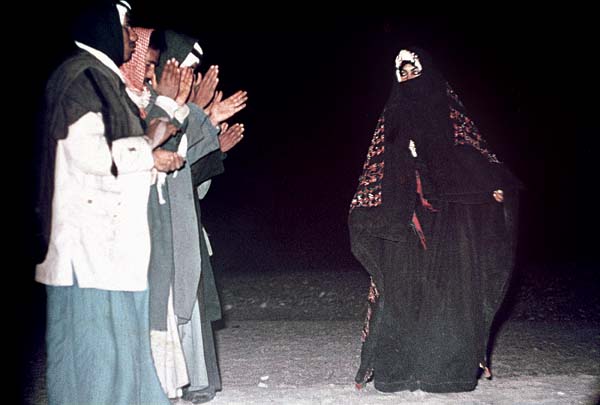
This comparison of the Biblical text with the life of the Bedouin in Sinai is a strong indication that the Israelites may indeed have wandered as nomads in the wilderness.
I do not mean to suggest that the entire Biblical account is to be regarded as a reliable reflection of historical events. The Biblical account, in its final form, is the product of various traditions transmitted through the tribes and “woven into a complete all-encompassing tapestry, combining early memories together with folktales and images from later periods.” 3
It is nevertheless the case that many of the events described in the Exodus story have a realistic background in the natural conditions of the Sinai and reflect a nomadic way of life that exists to this day. Such a way of life does not leave behind many traces, and this can explain the total absence of archaeological evidence for these stories. But the ethnographic evidence supports the theory that the Israelites (or some of them) did indeed sojourn in the wilderness.
Does the narrative of the journeys of the Israelites in the wilderness have any authentic background? Could the wanderings really have taken place in Sinai? After all, as is frequently noted, there is a complete absence of any archaeological remains that would evidence their wanderings. Every natural environment, however, has its unique characteristics, its natural possibilities. Human beings generally try to live and work in harmony with their varying natural environments. This is certainly true of the Sinai Peninsula and the Bedouin who live there, at least until the modern technological revolution reached them at the end of […]
You have already read your free article for this month. Please join the BAS Library or become an All Access member of BAS to gain full access to this article and so much more.
Join the BAS Library!
Already a library member? Log in here.
Institution user? Log in with your IP address or Username
James Pritchard, Ancient Near Eastern Texts Relating to the Old Testament ( ANET) (Princeton: Princeton Univ. Press, 1950), p. 259.
Pritchard, ANET, p. 259.
Benjamin Mazar, “The Exodus and Conquest of Israel,” Canaan and Israel (Jerusalem: Israel Exploration Society, 1974), p. 100 (Hebrew).
No products in the cart.

- Home School
- Bible Class Debrief
- Eden to the City of God
- Bible Maps Overview
- Pro Series Maps
- Exodus Route Map
- The Bible Poem
- Story Oriented. Image Driven. Life Changing.
Map of Israel Complaining in the Wilderness

Follow Israel in the Wilderness:
Israel traveled to Mara (Exodus 15:22), then they camped near Elim (Exodus 15:27), then on to Rephidim (Exodus 17:1)

Free Digital Maps Set: 41 Bible Maps (the complete set) Free!

Old Testament Maps Set: 28 Pro Series Bible Maps

Patriarchs Maps Set: 7 Pro Series Bible Maps

Pro Series Digital Maps Set: 41 Bible Maps (the complete set)
Pro Series Single Map – Choose Your Map
Username or email address *
Remember me
Lost your password?

IMAGES
VIDEO
COMMENTS
This map shows the Exodus of the Israelites from Egypt to the Promised Land under the leadership of Moses. The Nile Delta was a triangular area of marshland about 150 miles from north to south, from Memphis to the Mediterranean, and about 150 - 200 miles wide. Upper Egypt was a bit further south from Lower Egypt, starting at Memphis (bottom of ...
The Israelites continued to wander in the wilderness for another 38 years, traveling back and forth across the desert and encountering many challenges and trials along the way. They fought battles against other nations, complained about their lack of food and water, and even rebelled against Moses and God on several occasions. Finally, after 40 ...
Israel was not wandering for 40 years in the desert. For almost 38 years they were in Kadesh Barnea and for almost 1 year they were at Mount Sinai. They were traveling a little less than two years. That is still a lot of travelling for 600,000 men plus women and children and animals. The time at Sinai was not idle. Of the 300 days after arrival ...
2. Israel's Exodus from Egypt and Entry into Canaan. Image. Bible map 2. Rameses Israel was thrust out of Egypt ( Ex. 12; Num. 33:5 ). Succoth After the Hebrews left this first campsite, the Lord attended them in a cloud by day and in a pillar of fire by night ( Ex. 13:20-22 ). Pi-hahiroth Israel passed through the Red Sea ( Ex. 14; Num. 33 ...
Wilderness of Zin, that is, Kadesh Barnea. a. Maps from the 1500's called Kadesh "stop 33" from Egypt. b. "They journeyed from Ezion-geber and camped in the wilderness of Zin, that is, Kadesh." Numbers 33:36. c. "Then the sons of Israel, the whole congregation, came to the wilderness of Zin in the first month; and the people stayed at Kadesh ...
According to the Bible, the Israelites stayed at a place called Kadesh following their Exodus from Egypt and wanderings through the desert. Kadesh—also called Kadesh-Barnea in some Biblical passages 1 —was where Moses' sister Miriam died and was buried (Numbers 20:1) and from where Moses sent 12 men to spy out the Promised Land (Numbers ...
This map shows the 42 camp sites during the Wilderness Journey when the people of God left Egypt—in what is called the Exodus—and traveled for 40 years around the wilderness before settling into Canaan, the Promised Land. ... The map shows the routes of ancient Israel, Egypt, and neighboring Jordan in 1:1,153,000 scale. About the Author ...
The Exodus and Numbers narratives place the decades of wilderness wandering between the two visits to Kadesh. The first time they visit the spies are sent out; the second time they visit Miriam dies. Numbers 33 on the other hand has only one visit to Kadesh. Moses' speech in Deuteronomy also has only one visit.
This is a map of the Israelite journey out of the wilderness and into the Promised Land. > eLearning Login My Account Contact Us. Cart BLOG SHOP ... Map of the Prophets to Israel and Judah. Map of the Journeys of Abraham, Jacob and Joseph - The Founders. Map of the Exile to Babylon and Back to Jerusalem. Company. About Us
The Wilderness of Sinai was the last stop of the Exodus where Israel camped for 11 months and 5 days: a. Israel arrived at the final camp in front of Mt. Sinai in the Wilderness of Sinai on day 47 from Goshen: Ex 19:1. b. Scripture never says Israel camped in the Wilderness of Sinai then journeyed to the foot of Mt. Sinai. c.
1871 Map of the Journeyings of the Children of Israel From Egypt, through the Wilderness, to Caanan ... The Israelite journeyings are commonly spoken of as "wilderness wanderings," because they took the people through some areas that were known as wilderness. In order to understand the nature of the wanderings, it is important to realize the ...
WANDERINGS OF ISRAEL. won'-der-ingz: I. CONDITIONS . 1. The Wilderness . 2. Four Separate Regions Included . 3. "The Sandy Tract" 4. Description of the Arabah . 5. Physical Condition of the Wilderness . 6. Difficulties Regarding the Numbers of Israel and Account of Tabernacle . 7. Difficulty as to Number of Wagons . 8. Fauna of the Desert . 9.
3 ' Intro. Part II: overview, Israel's wandering, 40 years, sin believing evil spies, Joshua and Caleb only entered - follow along, use outline and answer questions - How does it help? - mostly focus on the application from Bible stories '1 - review map: travel from Goshen to east of the Jordan '4 - review previous lesson ' Israel was punished for murmuring (complaining and grumbling ...
The Divided Monarchy of Israel & Judah 932-587 BC The Exodus & Wilderness Wanderings under Moses 1446-1406 BC Flood of Noah ca. 3300 BC Founder's Corner General Apologetics Investigating Origins Israel in the Era of the Judges 1371-1049 BC The United Monarchy 1049-932 BC Ministry Updates
36 And they removed from Eziongaber, and pitched in the wilderness of Zin, which is Kadesh. 37 And they removed from Kadesh, and pitched in mount Hor , in the edge of the land of Edom. 38 And Aaron the priest went up into mount Hor at the commandment of the LORD, and died there, in the fortieth year after the children of Israel were come out of ...
Key Events in Israel's Wilderness Wanderings -Part 1 Barnes' Bible Charts EGYPT n Beginning of the Passover Exodus 12:1-18 n Blood on the doorpost Exodus 12:22 n Death of the firstborn Exodus 12:29 n Pharaoh releases Israel Exodus 20:33 n Israelites take spoils of Egypt Exodus 12:35-36 n Joseph's bones taken from Egypt Exodus 13:19 n Cloud by day, pillar of fire by
The tribal camps of Dan, Asher and Naphtali, collectively under Dan's banner, were placed together on the northern side of the tabernacle. Dan is the oldest son of Jacob and Bilhah (one of Rachel's slaves). They totaled 157,600 men who could fight and were the last group in the wilderness to leave. The banner of the camp of Dan shall be on the ...
The wilderness experience of Israel is a powerful warning to Christians today to avoid the snare of lack of faith. — Heb 3:7-12. It was a "great and fear-inspiring wilderness" through which Israel wandered for 40 years. Oases were few and far between in this land that was described as having "no water". The head of the Gulf of ʽAqaba.
Answer. "Wilderness wandering" refers to the plight of the Israelites due to their disobedience and unbelief. Nearly 3,500 years ago, the Lord delivered His people from Egyptian bondage as described in Exodus, chapters 1-12. They were to take possession of the land God had promised their forefathers, a land "flowing with milk and honey ...
Wilderness Wanderings Ethnographic Lessons from Modern Bedouin. By ... Could the wanderings really have taken place in Sinai? After all, as is frequently noted, there is a complete absence of any archaeological remains that would evidence their wanderings. ... "The Exodus and Conquest of Israel," Canaan and Israel (Jerusalem: Israel ...
Follow Israel in the Wilderness: Israel traveled to Mara (Exodus 15:22), then they camped near Elim (Exodus 15:27), then on to Rephidim (Exodus 17:1) Free Digital Maps Set: 41 Bible Maps (the complete set) Free! Quick View. Old Testament Maps Set: 28 Pro Series Bible Maps $ 15.99. Quick View. Patriarchs Maps Set: 7 Pro Series Bible Maps $ 5.99.
The Great Vigil of Easter, March 30, 2024